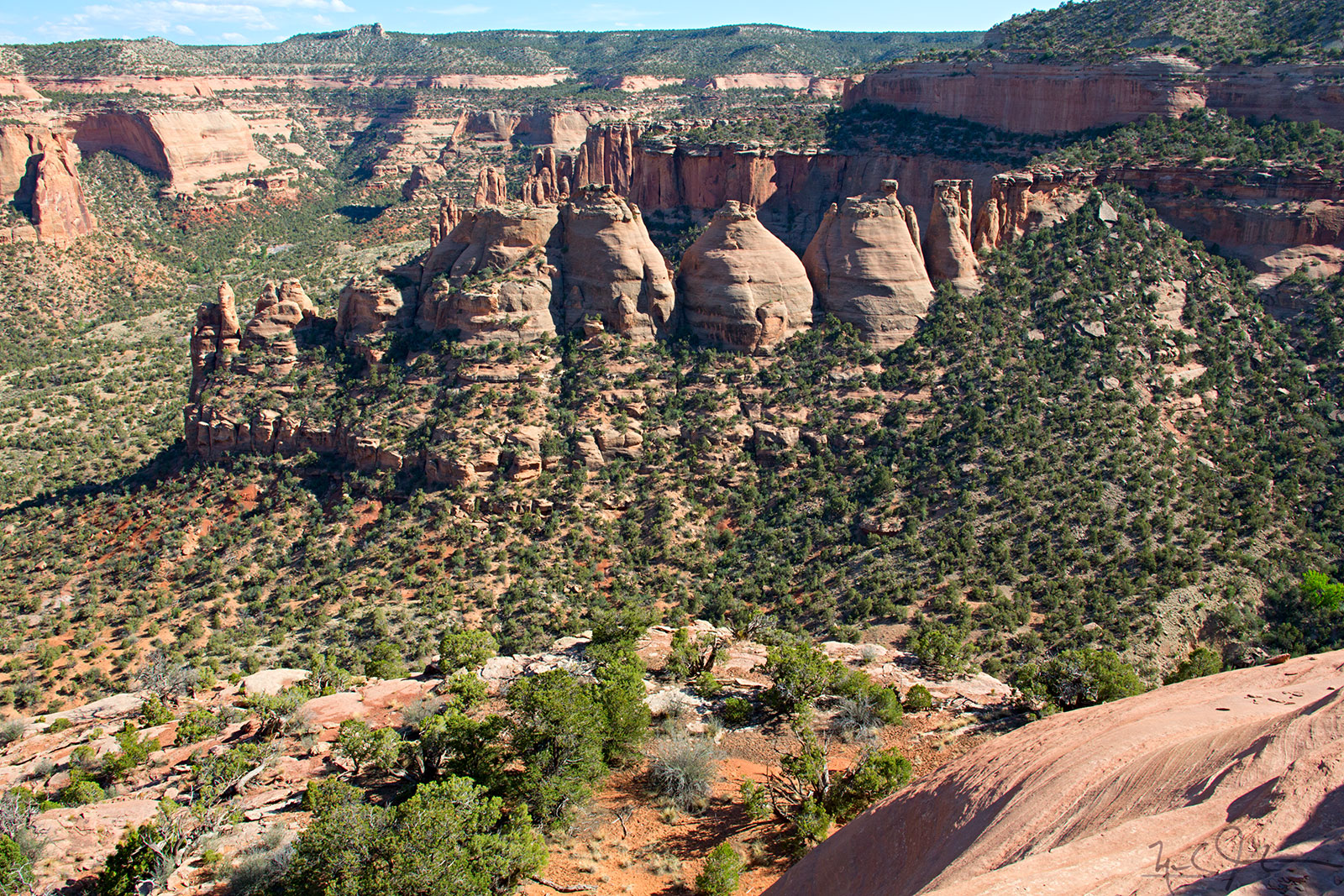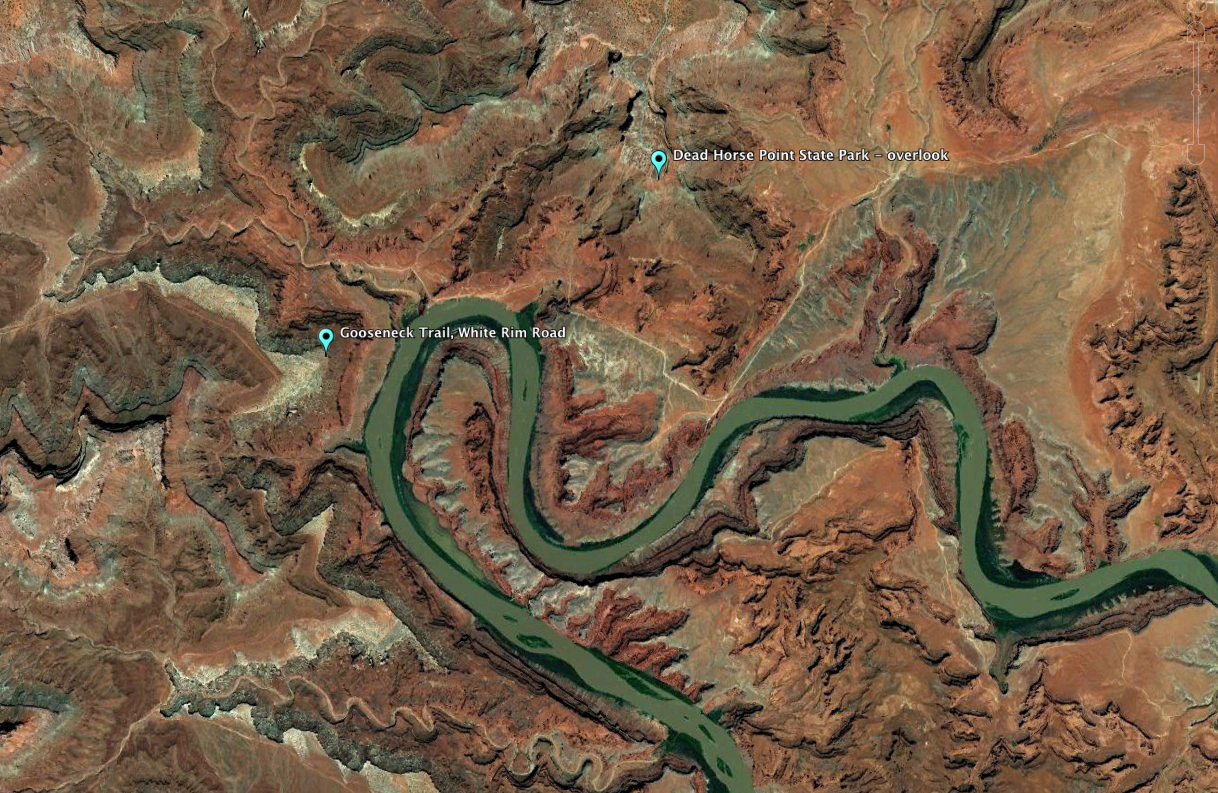I always wanted to see this well-known photo destination. Given its popularity, I thought I would get there early to make sure I had a good vantage point for some photos. So I got up in time to be at the entrance when the Dead Horse Point State Park officially opened at 6 AM.
It was about a 40-minute drive from downtown Moab, in total darkness. There was nobody in the gatehouse when I arrived at the park entrance, so I put my ten dollar entrance fee in the provided envelope and dropped it in the designated slot, then drove to the parking lot at the end of the point.
I need not have worried about beating the crowd - the place was desolate. Fifteen degrees Fahrenheit and a bit windy, and still pitch black. So I grabbed the flashlight and walked across the dry layer of crunchy snow to the overlook. Couldn't see a damned thing - just a void between the line of rosy light along the southeastern horizon in the distance and wall marking the boundary of the overlook.
So I went back to the car and rewarmed until there was enough dawn light to try again. I still couldn't see the shape of the land below from the overlook, but the camera could. So I took a couple of long exposures to figure out where to point the camera for the composition I wanted.
Hope you like the photo - waiting until the sun rose high enough to kiss the top of the point, I froze my @ss off to get it!


















